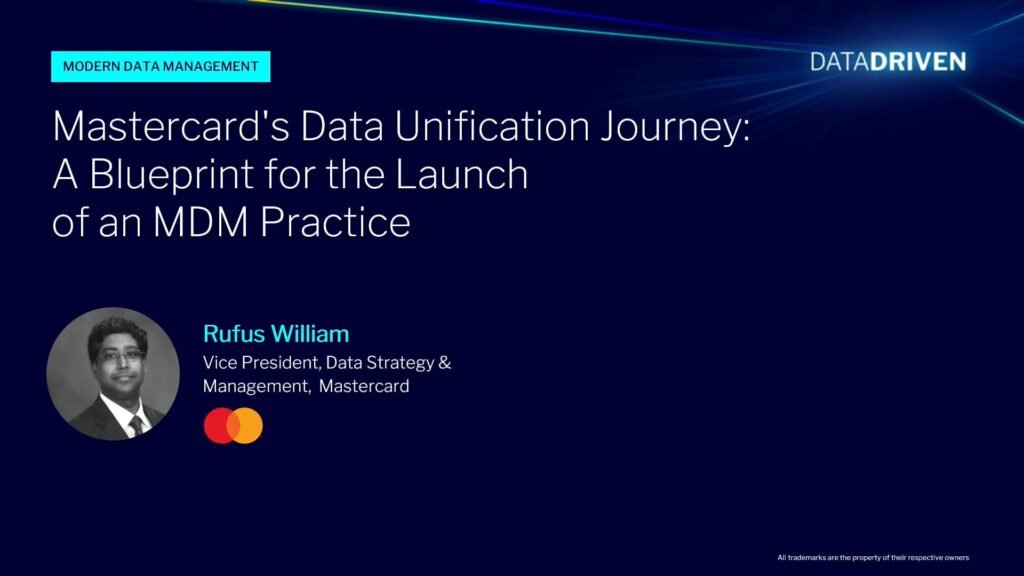With global operations, a ecosystem of partners and hundreds of products in its portfolio, Mastercard recognized the need to establish an MDM practice. Join this session, led by Rufus William, VP Data Strategy & Management, as he shares his experience building an MDM program at Mastercard, developed a roadmap and strategy aligned with corporate objectives, and how he collaborated with stakeholders across various teams to drive value for the organization. Learn more about the governance framework that he set up, invested in an ecosystem of partnership, and embedded into busines processes to create momentum and deliver impact fast.
- Why Reltio?
- Products
- DATA UNIFICATION AND MANAGEMENT
- Overview
- Reltio Data Cloud
- Entity Resolution and Merging
- Data Quality
- Data Integration
- Industries
- Customers
- Customer Stories
- Customer Stories Overview
- Customer Success
- Value Assurance
- Customer Support
- Support
- Documentation
- Trust Center
- Learn
- Community
- Partners
- Resources
- Customer Support
- Support
- Documentation
- Learn
- Trust Center
- Community
- Request a Demo
- Homepage
- Why Reltio
- Products
- Reltio Data Cloud
- Entity Resolution and Merging
- Data Quality
- Data Integration
- Intelligent 360
- Multidomain MDM
- Velocity Pack Overview
- Velocity Pack – Life Sciences
- Velocity Pack – Healthcare
- Velocity Pack – Insurance
- Velocity Pack – Financial Services
- Velocity Pack – B2B Data Domains
- Velocity Pack – B2C Data Domains
- Industries
- Customers
- Partners
- Resources
- Contact Us
- Request a Demo
